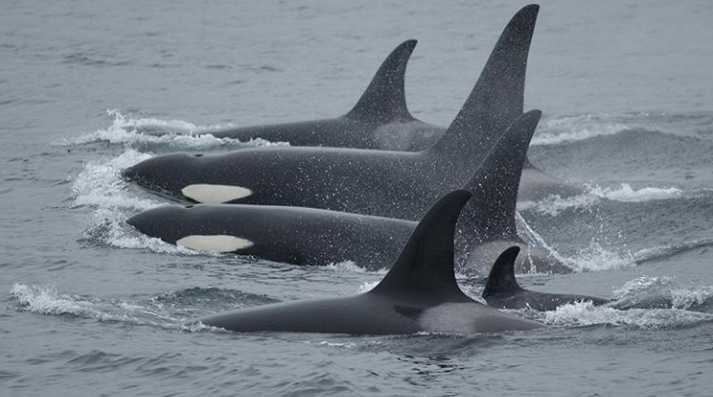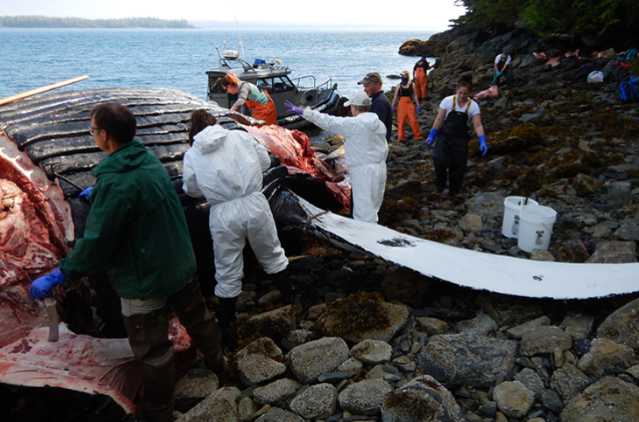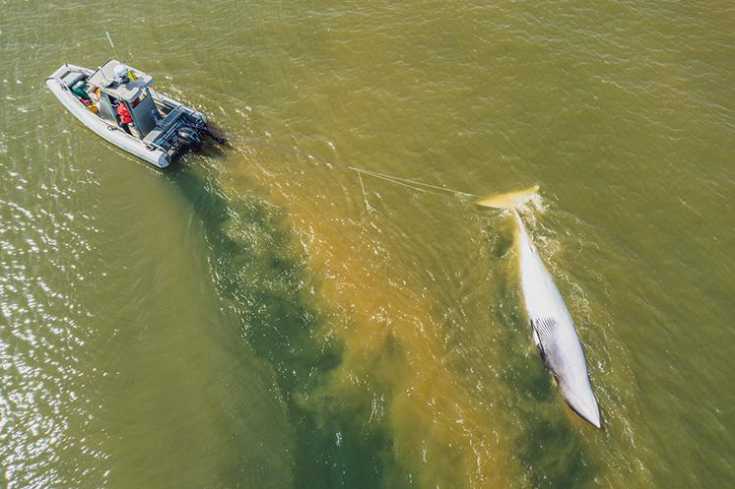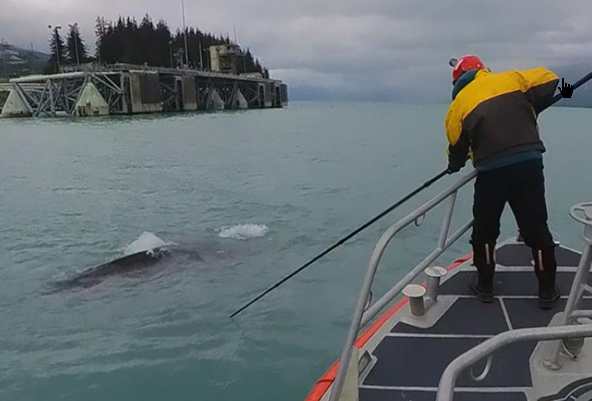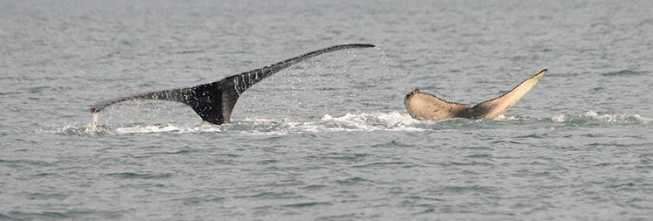
Employing Multiple Approaches
On September 28, the team of 14 boats and more than 30 Coffman Cove community members headed out to Barnes Lake, sequentially employing all three tactics. The two killer whales entered the channel on the north end on the falling tide. But, the kelp blocked their exit from the lake. Conditions were not favorable to try again that day.
The team returned September 29, this time with two parallel approaches. One team worked to remove some of the kelp from the north entrance to create a channel the whales could swim through. Meanwhile, a second team focused on moving the whales out of the lake through the south entrance.
“We started from the approach that worked in 1994, and adapted it to succeed with these two whales,” said David Bain of Orca Conservancy. “Barnes Lake is difficult to get in and out of, as the exits are narrow and shallow, whitewater forms when the current is strong, and much of both channels dry out and waterfalls form at low tide. Driving through the north channel as we did in 1994 didn’t work this year, perhaps because the kelp was thicker and stronger, the tide wasn’t quite as high, and the whales were larger. So, we decided to try to take advantage of these whales’ greater willingness to move through shallow water and narrow passages and try the south channel.”
Using the playbacks of known whales, the team was able to draw both killer whales into the south channel. Once both whales entered the channel, the team deployed the hukilau and had several oikomi pipes ready for use if needed. This time the killer whales showed no hesitation and continued to swim through the channel. With the aid of the high tide, they were able to leave Barnes Lake.
“Using a series of brief recordings of females these two whales are known to enjoy traveling with, we managed to coax them into and through the exit channel. It sounds simple but in fact required a huge effort from dozens of people to successfully pull it off. It’s good to know that after more than 6 weeks in a small lake that they have their freedom back,” said Jared Towers, killer whale research technician from Fisheries and Oceans Canada.
“Their responsiveness to the playbacks allowed us to get them to the channel entrance at the right time (high slack); the hukilau was redesigned overnight by commercial fishers to allow it to be deployed quickly enough to discourage them from returning to the lake; and a last playback encouraged them to head for open water,” added Bain. “Then they just followed the boat out. They traveled more than 10 miles in the first 2 1/2 hours at sea, which gives us hope that we got them out while their condition was still good enough for them to survive.”
“It was a very cool experience to have been involved in and I appreciated all of the work that NOAA did to facilitate making this happen!” said Coffman Cove resident Doug Rhodes.
This successful rescue response would not have been possible without the community of Coffman Cove including local citizens, fishing outfitters, sports fisherman, commercial fisherman, and local businesses who volunteered their time, boats, local knowledge, and hospitality.
“It was a wonderful team effort, composed of ideas contributed by local residents as well as those experienced working with whales,” said Bain.
Our partners include the community of Coffman Cove, Fisheries and Oceans Canada, and Orca Conservancy. We received additional help and information from:
- Alaska Department of Fish and Game
- U.S. Forest Service
- Washington Department of Fish and Wildlife
All response activities were authorized under the Marine Mammal Health and Stranding Response Program Permit 24359.
If you see a stranded, injured, entangled, or dead marine mammal, immediately call the NOAA Fisheries Alaska Statewide 24-hour Stranding Hotline at (877) 925-7773.
[content id=”79272″]
Pages: 1 2


